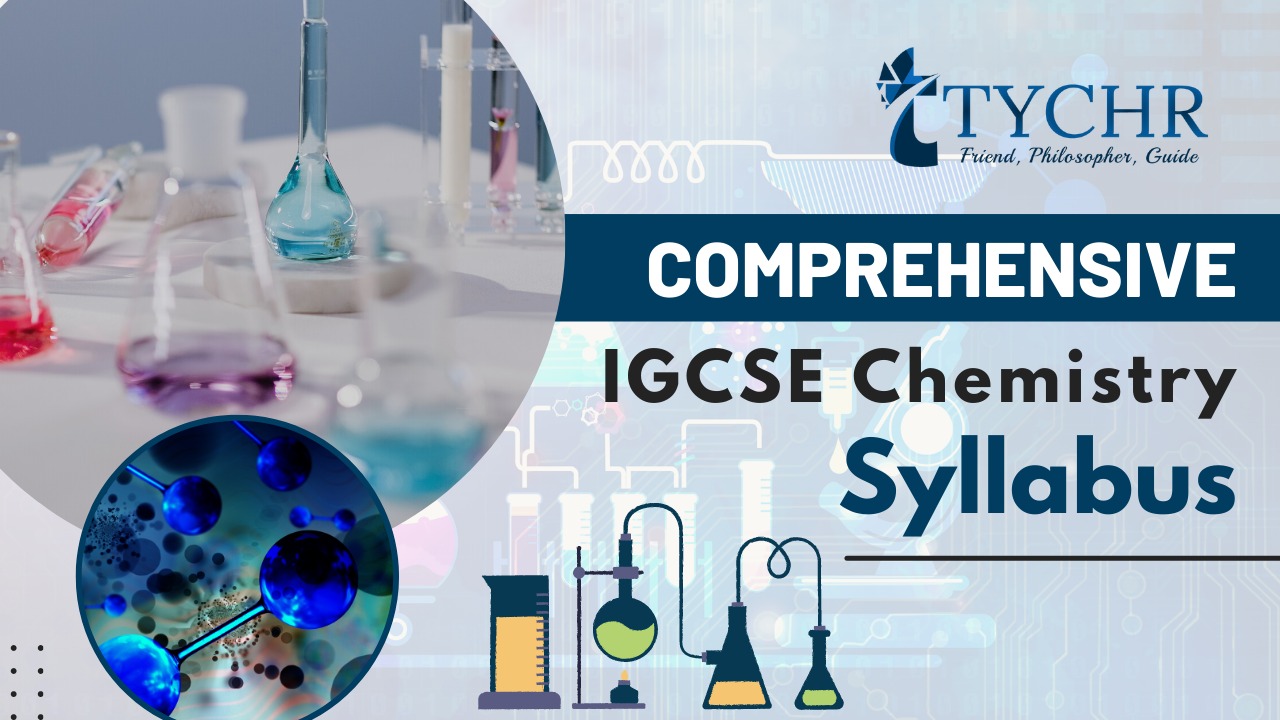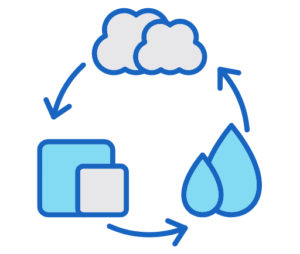Table of Contents
- 1 Unit 1: The particulate nature of matter
- 2
- 3 Unit 2: Experimental Techniques
- 4 Unit 3: Atoms, elements and compounds
- 5 Unit 4: Stoichiometry
- 6 Unit 5: Electricity and Chemistry
- 7 Unit 6: Chemical energetics
- 8 Unit 7: Chemical Reactions
- 9 Unit 8: Acids, bases and salts
- 10 Unit 9: The periodic table
- 11 Unit 10: Metals
- 12 Unit 11: Air and water
- 13 Unit 12: Sulfur
- 14 Unit 13: Carbonates
IGCSE Chemistry is a course that covers the fundamental principles of chemistry. It is designed for students between the ages of 14-16 and serves as an introduction to the subject. The course is divided into various topics, including the structure of atoms, chemical bonding, chemical reactions, acids and bases, organic chemistry, and environmental chemistry.
Every candidate is required to sit for three papers. These papers are further given for external assessment.
Candidates who have studied the Core subject content or are expected to receive a grade of D or lower should sit for:
- Paper 1
- Paper 3
- Either Paper 5 or Paper 6
which would make them eligible for grades C to G.
On the other hand, candidates who have studied the Extended subject content (Core and Supplement) and are expected to achieve a grade of C or higher should take:
- Paper 2
- Paper 4
- Either Paper 5 or Paper 6
which would make them eligible for grades A* to G.
| Paper | Core candidates | Extended candidates |
| 1 | Paper: Multiple choice exam
Duration: 45 minutes Weightage: 30% Number of marks: 40 Questions will be based on the Core subject content |
– |
| 2 | – | Paper: Multiple choice exam
Duration: 45 minutes Weightage: 30% Number of marks: 40 Questions will be based on the Extended subject content |
| 3 | Paper: Theory
Duration: 1 hour 15 minutes Weightage: 50% Number of marks: 80 Questions will be based on the Core subject content |
– |
| 4 | – | Paper: Theory
Duration: 1 hour 15 minutes Weightage: 50% Number of marks: 80 Questions will be based on the Core subject content |
| All candidates take either | ||
| 5 | Paper: Practical Test
Duration: 1 hour 15 minutes Weightage: 20% Number of marks: 40 Questions will be based on the experimental skills in section 4 |
|
| 6 | Paper: Alternative to Practical
Duration: 1 hour Weightage: 20% Number of marks: 40 Questions will be based on the experimental skills in section 4 |
|
Find the IGCSE Chemistry syllabus below for a better understanding on what will be covered in the exams:
Unit 1: The particulate nature of matter
This unit explores the fundamental concept of how matter, as outlined in the IGCSE Chemistry Syllabus, is composed of tiny particles, including atoms and molecules.
| Subtopic | Subtopic Number | IGCSE Points to understand |
| The particulate nature of matter | 1.1 | Changes of state of matter in terms of kinetic theory:
The kinetic theory explains the changes of state of matter in terms of the movement and energy of particles. As a substance gains thermal energy, its particles move faster and become less ordered, leading to changes in state. Melting: Melting is the process of changing a solid into a liquid by adding thermal energy. This causes the particles in the solid to vibrate faster until they overcome their intermolecular forces and break apart from their fixed positions, resulting in a liquid. Boiling: Boiling is the process of changing a liquid into a gas by adding thermal energy. This causes the particles in the liquid to move faster until they overcome their intermolecular forces and escape as a gas. Evaporation: Evaporation is the process of changing a liquid into a gas at the surface of the liquid, without adding thermal energy. This occurs when the particles at the surface of the liquid have enough energy to escape their intermolecular forces and become a gas. Freezing: Freezing is the process of changing a liquid into a solid by removing thermal energy. This causes the particles in the liquid to move slower until they can no longer overcome their intermolecular forces and become fixed in position as a solid. Condensation: Condensation is the process of changing a gas into a liquid by removing thermal energy. This causes the particles in the gas to move slower until they can no longer overcome their intermolecular forces and become liquid droplets. Sublimation: Sublimation is the process of changing a solid directly into a gas without passing through the liquid state. This occurs when the particles in the solid gain enough energy to overcome their intermolecular forces and become a gas. Brownian Motion: Brownian motion is the random movement of particles in a fluid due to collisions with other particles. This motion is caused by the thermal energy of the particles and can be observed using a microscope. Diffusion: Diffusion is the movement of particles from an area of high concentration to an area of low concentration. This occurs due to the random motion of particles and can be observed in gases, liquids, and solids. |
Unit 2: Experimental Techniques
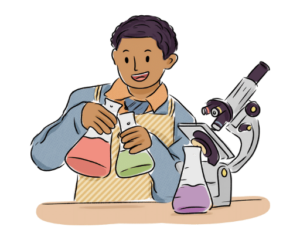
| Subtopic | Subtopic Number | IGCSE Points to understand |
| Measurement | 2.1 | Basic Lab Apparatus to Measure:
There are various basic laboratory apparatus used to measure different quantities such as mass, volume, and temperature. Some examples include a balance for measuring mass, a burette for measuring volume, and a thermometer for measuring temperature. |
| Purity | 2.2 | Paper Chromatography: Paper chromatography is a technique used to separate and identify different components of a mixture. A small spot of the mixture is placed on a strip of paper, which is then placed in a solvent. As the solvent moves up the paper, the different components of the mixture move with it at different rates, allowing for separation and identification.
Chromatograms: Chromatograms are the patterns produced on a chromatography paper after separation of a mixture. The positions of the separated components can be identified by measuring the distance they have traveled from the spot and calculating their Rf values. Rf Values: Rf values (retention factor values) are used to identify components of a mixture separated through chromatography. Rf values are calculated by measuring the distance a component has traveled from the spot and dividing it by the distance traveled by the solvent. Purity of a Substance: The purity of a substance refers to the degree to which it contains only one component. Impurities can affect the physical and chemical properties of a substance. Purity can be determined by melting point or boiling point measurements, or through chromatography techniques. Methods of Purification: There are several methods used to purify substances, including distillation, crystallization, and chromatography.
Fractionating Column: A fractionating column is a piece of equipment used in distillation to separate a mixture of liquids with different boiling points. As the vapor rises through the column, it condenses and re-evaporates several times, allowing for separation of the different components. The column is designed to increase the surface area available for condensation and vaporization, which increases the effectiveness of the separation process. |
Unit 3: Atoms, elements and compounds
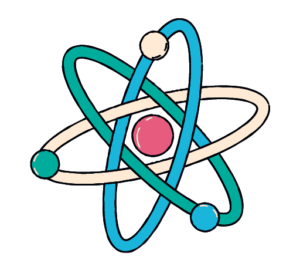
| Subtopic | Subtopic Number | IGCSE Points to understand |
| Atomic structure and the Periodic Table | 3.1 | Proton Number: It is the number of protons present in the nucleus of an atom, which is also known as the atomic number. It determines the identity of the element.
Nucleon Number: It is the total number of protons and neutrons present in the nucleus of an atom. It determines the mass of the atom. Isotopes: Isotopes are atoms of the same element that have different numbers of neutrons, but the same number of protons. Radioactive and Non-radioactive Isotopes: Radioactive isotopes are those that spontaneously undergo decay and emit radiation, whereas non-radioactive isotopes are stable and do not undergo decay. Noble Gas Electronic Structures: Noble gases have a full outer shell of electrons, making them stable and unreactive. |
| Structure and bonding | 3.2 | Elements: Elements are pure substances that cannot be broken down into simpler substances by chemical means. They are made up of atoms with the same number of protons.
Mixtures: Mixtures are substances made up of two or more elements or compounds that are physically combined and can be separated by physical means. Compounds: Compounds are pure substances made up of two or more different elements that are chemically combined in fixed proportions. Alloy: An alloy is a mixture of two or more metals, or a metal and a non-metal, that has properties different from those of its constituent elements. Formation of Ions: Ions are formed when atoms gain or lose electrons to become positively or negatively charged. Ionic Bonds: Ionic bonds are formed when positively charged ions (cations) and negatively charged ions (anions) are attracted to each other and held together by electrostatic forces. Lattice Structure: Ionic compounds have a lattice structure, where the ions are arranged in a repeating pattern. Covalent Bonds: Covalent bonds are formed when atoms share electrons to achieve a full outer shell. Melting Point and Boiling Point of Ionic and Covalent Compounds:
Covalent Structure of Diamond: Diamond has a covalent network structure, where each carbon atom is covalently bonded to four other carbon atoms, forming a tetrahedral arrangement. Covalent Structure of Graphite: Graphite has a layered covalent structure, where each carbon atom is covalently bonded to three other carbon atoms in a hexagonal arrangement, forming layers that are held together by weak intermolecular forces. Macromolecular Structure of Silicon (IV) Oxide: Silicon (IV) oxide has a macromolecular covalent structure, where each silicon atom is covalently bonded to four oxygen atoms, forming a giant network structure. Metallic Bonding: Metallic bonding is the electrostatic attraction between positively charged metal ions and a sea of delocalized electrons. It results in properties such as high electrical conductivity, malleability, and ductility. |
Unit 4: Stoichiometry
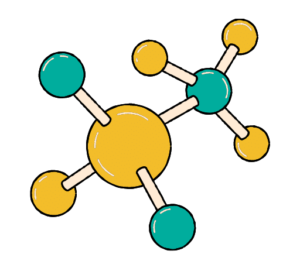
Stoichiometry, as prescribed by the IGCSE Grade 10 Chemistry Syllabus, deals with the quantitative relationships in chemical reactions, including balancing equations and calculating reactant and product amounts.
| Subtopic | Subtopic Number | IGCSE Points to understand |
| Stoichiometry | 4.1 | Relative atomic mass: The relative atomic mass of an element is the average mass of one atom of that element compared to one-twelfth of the mass of an atom of carbon-12.
Relative molecular mass: The relative molecular mass of a compound is the sum of the relative atomic masses of all the atoms in the compound. Balanced equation: A balanced equation is a chemical equation where the number of atoms of each element is equal on both sides of the equation. Ionic equations: Ionic equations show the chemical species involved in a reaction and their charges, indicating which ions are oxidized and reduced. Mole: The mole is the SI unit for the amount of substance. One mole of a substance contains Avogadro’s number of particles, which is approximately 6.02 x 1023 particles. Avogadro’s Constant: Avogadro’s constant is the number of particles in one mole of a substance. It is approximately 6.02 x 1023 particles/mol. Empirical formulae: An empirical formula shows the simplest whole-number ratio of atoms in a compound. Molecular formulae: A molecular formula shows the actual number of atoms of each element in a molecule of a compound. |
Unit 5: Electricity and Chemistry

| Subtopic | Subtopic Number | IGCSE Points to understand |
| Electricity and chemistry | 5.1 | Electrolysis of ionic compounds: Electrolysis is a process that uses an electric current to break down an ionic compound into its constituent elements. This is achieved by passing an electric current through a molten or dissolved ionic compound, causing its positive ions to move towards the negative electrode (cathode) and the negative ions to move towards the positive electrode (anode). The ions gain or lose electrons at the electrodes, forming new substances.
Why metals or hydrogen is formed in the negative electrode: Metals or hydrogen are formed at the negative electrode (cathode) during electrolysis depending on the reactivity of the metal ions present. If the metal ion is more reactive than hydrogen, it will be reduced to form the metal. If it is less reactive, hydrogen gas will be formed instead. Electroplating of metals: Electroplating is the process of coating a metal object with a thin layer of another metal using electrolysis. The metal to be plated is made the negative electrode (cathode), and a piece of the metal to be used as the coating is made the positive electrode (anode). When an electric current is passed through the electrolyte, the metal from the anode dissolves and is deposited onto the cathode. Uses of electroplating: Electroplating is used to improve the appearance, durability, and corrosion resistance of metal objects. It is also used to create a decorative finish, increase hardness or wear resistance, and prevent metal from reacting with its environment. Ionic half equations: Ionic half equations represent the half reactions that occur at each electrode during electrolysis. These equations show the transfer of electrons between ions and the formation of new substances. Why copper and aluminum in cables: Copper and aluminum are used in electrical cables because they are good conductors of electricity and have low resistance. Copper is more expensive but a better conductor, while aluminum is cheaper but has higher resistance. Transfer of charge during electrolysis: During electrolysis, the transfer of charge occurs through the movement of ions. The positive ions move towards the negative electrode (cathode), and the negative ions move towards the positive electrode (anode). At the electrodes, the ions gain or lose electrons, forming new substances. Simple cells: A simple cell is an electrochemical cell that converts chemical energy into electrical energy. It consists of two electrodes, a positive electrode (anode) and a negative electrode (cathode), connected by an electrolyte. Outlining how aluminum is manufactured from aluminum oxide in molten cryolite: Aluminum is manufactured from aluminum oxide by electrolysis in molten cryolite. The process involves passing an electric current through a mixture of aluminum oxide and cryolite at high temperatures. The aluminum oxide dissolves in the molten cryolite, and the aluminum ions are reduced at the negative electrode (cathode) to form liquid aluminum, which is then collected. The oxygen ions combine with the carbon anodes at the positive electrode (anode) to form carbon dioxide gas. |
Unit 6: Chemical energetics
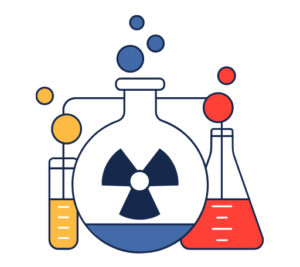
| Subtopic | Subtopic Number | IGCSE Points to understand |
| Energetics of a reaction | 6.1 | Exothermic reactions are chemical reactions that release energy in the form of heat, light, or sound. They are characterized by a negative change in enthalpy (∆H < 0) and typically result in an increase in temperature.
Endothermic reactions, on the other hand, are chemical reactions that absorb energy from the surroundings in the form of heat, light, or sound. They are characterized by a positive change in enthalpy (∆H > 0) and typically result in a decrease in temperature. Energy level diagrams are graphical representations of the energy changes that occur during a chemical reaction. They show the energy levels of the reactants, products, and intermediates, as well as the energy required to break and form bonds. Bond breaking and bond forming reactions are chemical reactions that involve the breaking and forming of chemical bonds. Bond breaking requires energy, while bond forming releases energy. Calculating bond energies: Bond energy = energy required to break the bond – energy released when the bond is formed |
| Energy transfer | 6.2 | Hydrogen can be used as a fuel in a variety of applications, including fuel cells, internal combustion engines, and as a fuel for rockets. When hydrogen is burned, it produces water vapor and releases a large amount of energy.
Radioactive isotopes can be used as a source of energy in nuclear power plants. The energy is produced by the decay of the radioactive isotopes, which release heat and radiation. Fuel cells are devices that convert chemical energy into electrical energy. They work by using a fuel, such as hydrogen, and an oxidant, such as oxygen, to generate electricity. Fuel cells are often used in vehicles and as backup power sources. |

Unit 7: Chemical Reactions
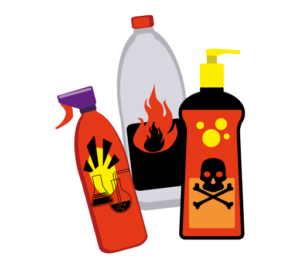
As per the IGCSE Chemistry Syllabus, this unit covers various types of chemical reactions, such as synthesis, decomposition, and displacement reactions.
| Subtopic | Subtopic Number | IGCSE Points to understand |
| Physical and chemical changes | 7.1 | Physical and chemical changes in a reaction: Physical changes involve a change in the state or form of matter, such as melting or dissolving, while chemical changes involve a rearrangement of atoms and the formation of new substances, such as burning or rusting. |
| Rate (speed) of reaction | 7.2 | Effect of concentration, particle size, catalysts, and temperature on the rate of reactions:
Explaining the role of light in photochemical reactions: Light provides the energy necessary for photochemical reactions to occur. This energy can be absorbed by certain molecules, leading to their excited state and subsequent reaction with other molecules. Use of silver salt in photography: Silver salts, such as silver chloride and silver bromide, are light-sensitive and used in traditional photographic film and paper. When exposed to light, they undergo a chemical reaction that results in the formation of a visible image. |
| Reversible reactions | 7.3 | Reversible reaction and equilibrium:
|
| Redox | 7.4 | Oxidation and reduction: Oxidation involves the loss of electrons or an increase in oxidation state, while reduction involves the gain of electrons or a decrease in oxidation state.
Redox in terms of electron transfer: Redox reactions involve the transfer of electrons from one reactant to another, with the oxidized reactant losing electrons and the reduced reactant gaining electrons. Oxidizing and reducing agents:
|
Unit 8: Acids, bases and salts
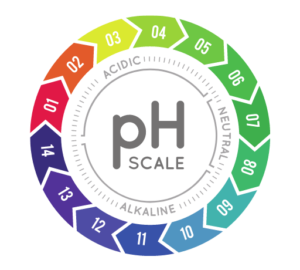
Students learn about the properties and behavior of acids, bases, and salts in accordance with the IGCSE Grade 10 Chemistry Syllabus, including their reactions and uses.
| Subtopic | Subtopic Number | IGCSE Points to understand |
| The characteristic properties of acids and bases | 8.1 | Characteristics of acids: Acids are substances that produce hydrogen ions (H+) when dissolved in water. They have a sour taste, turn blue litmus paper red, and have a pH less than 7. Examples of acids include hydrochloric acid (HCl) and sulfuric acid (H2SO4).
Characteristics of bases: Bases are substances that produce hydroxide ions (OH-) when dissolved in water. They have a bitter taste, turn red litmus paper blue, and have a pH greater than 7. Examples of bases include sodium hydroxide (NaOH) and calcium hydroxide (Ca(OH)2). Neutrality: A neutral solution has a pH of 7 and contains equal concentrations of hydrogen ions (H+) and hydroxide ions (OH-). Water is an example of a neutral solution. Relative acidity: The relative acidity of a solution is determined by its pH. A lower pH indicates a higher acidity, while a higher pH indicates a lower acidity. Alkalinity: Alkalinity is the opposite of acidity and refers to the degree to which a solution can neutralize an acid. Alkaline solutions have a pH greater than 7 and contain a high concentration of hydroxide ions (OH-). Importance of controlling acidity in soil: The pH of soil affects the availability of nutrients to plants. If the soil is too acidic or too alkaline, certain nutrients become unavailable, which can affect plant growth and yield. Therefore, controlling acidity in soil is important for optimal plant growth. Acids and Bases to aqueous solutions: Acids and bases can dissolve in water to form aqueous solutions. In these solutions, acids produce hydrogen ions (H+) and bases produce hydroxide ions (OH-). Strong and weak acids: Strong acids dissociate completely in water, producing a large number of hydrogen ions. Examples of strong acids include hydrochloric acid (HCl) and sulfuric acid (H2SO2). Weak acids, on the other hand, only partially dissociate in water and produce fewer hydrogen ions. Examples of weak acids include acetic acid (CH2COOH) and carbonic acid (H2CO3). Strong and weak alkali: Strong alkalis, such as sodium hydroxide (NaOH) and potassium hydroxide (KOH), dissociate completely in water, producing a high concentration of hydroxide ions. Weak alkalis, such as ammonia (NH3), only partially dissociate in water and produce fewer hydroxide ions. |
| Types of oxides | 8.2 | Acidic oxides: Acidic oxides are non-metal oxides that react with water to form acids. Examples of acidic oxides include sulfur dioxide (SO2) and nitrogen dioxide (NO2).
Basic oxides: Basic oxides are metal oxides that react with water to form bases. Examples of basic oxides include sodium oxide (Na2O) and calcium oxide (CaO). |
| Preparation of salts | 8.3 | Preparation of salts: Salts can be prepared by reacting an acid with a base, a metal, or a metal carbonate. The acid-base reaction produces water and a salt, while the acid-metal or acid-metal carbonate reaction produces a salt and hydrogen gas.
Separation of salts: Salts can be separated by techniques such as filtration, crystallization, and evaporation. Filtration is used to separate insoluble impurities, while crystallization and evaporation are used to obtain the solid salt. Purification of salts: Salts can be purified by recrystallization, which involves dissolving the salt in hot water and then allowing it to cool slowly. Impurities will remain in the solution and can be filtered out, leaving behind pure crystals of the salt. |
| Identification of ions and gases | 8.4 | Identifying:
|
Unit 9: The periodic table
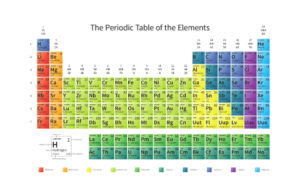
| Subtopic | Subtopic Number | IGCSE Points to understand |
| The periodic table | 9.1 | Periodic Table: The periodic table is a chart that arranges elements based on their atomic structure and chemical properties. Elements are arranged in rows (periods) and columns (groups) based on their electron configurations. |
| Periodic trends | 9.2 | Change from metallic to non-metallic characters across a period: The metallic character of elements decreases as you move across a period from left to right. This is because the number of valence electrons decreases, making it harder for atoms to lose electrons and become cations.
Group number: The group number refers to the vertical column of elements in the periodic table. Elements within the same group have similar chemical properties due to the same number of valence electrons. Valence electrons: Valence electrons are the electrons in the outermost energy level of an atom. These electrons determine the chemical properties of an element. |
| Group properties | 9.3 | Group 1 metals: Group 1 metals, also known as alkali metals, are located in the first column of the periodic table. These metals are highly reactive and have low melting points.
Properties of Group 1 elements: Group 1 elements have low melting and boiling points, are highly reactive, and tend to form ionic compounds. They also have low densities and are soft enough to be cut with a knife. Properties of halogens: Halogens are a group of non-metal elements located in the second-to-last column of the periodic table. They are highly reactive and tend to form diatomic molecules. Trends: Trends in the periodic table refer to the way certain properties of elements change as you move across a period or down a group. Examples of trends include electronegativity, atomic radius, and ionization energy. |
| Transition elements | 9.4 | Transition elements: Transition elements are located in the d-block of the periodic table. These elements have partially filled d-orbitals and are characterized by their variable oxidation states and colorful compounds.
Variable oxidation state: Transition elements are able to exhibit multiple oxidation states due to the presence of partially filled d-orbitals in their electron configurations. |
| Noble gases | 9.5 | Noble gases: Noble gases are located in the last column of the periodic table and are known for their low reactivity. They have a full outer electron shell and are chemically inert.
Uses of noble gases: Noble gases are used in a variety of applications, including lighting, welding, and cryogenics. Helium, for example, is used in balloons and as a coolant for nuclear reactors. |
Unit 10: Metals
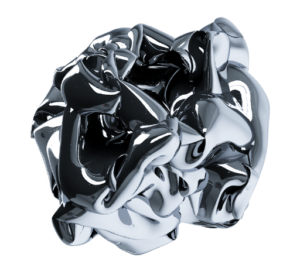
| Subtopic | Subtopic Number | IGCSE Points to understand |
| Properties of metals | 10.1 | General physical properties of metals: Metals are generally solid at room temperature, have a high melting and boiling point, are good conductors of heat and electricity, are malleable and ductile, and have a shiny metallic luster.
General chemical properties of metals: Metals have a tendency to lose electrons to form positive ions and form ionic compounds with non-metals. They also react with acids to form salt and hydrogen gas. |
| Reactivity series | 10.2 | Reactivity of elements with water or steam:
Action of heat on:
|
| Extraction of metals | 10.3 | Obtaining metals from their ores: Metals are obtained from their ores through processes like reduction, electrolysis, and smelting.
Reactions in extracting iron from hematite: Iron is extracted from hematite ore by reduction with carbon monoxide gas in a blast furnace to produce molten iron and carbon dioxide gas. Conversion of iron into steel: Iron can be converted into steel by adding small amounts of carbon and other elements to it to improve its properties such as strength, hardness, and corrosion resistance. Electrolysis process to extract aluminum from bauxite: Aluminum is extracted from bauxite ore by electrolysis of molten aluminum oxide dissolved in molten cryolite. Extraction of zinc from zinc blende: Zinc is extracted from zinc blende ore by roasting the ore with excess air to produce zinc oxide and sulfur dioxide gas, which is then reduced with carbon to produce molten zinc. |
| Uses of metals | 10.4 | Uses of aluminum: Aluminum is used in making aircraft, cars, cans, foil, kitchen utensils, and electrical wiring due to its low density, high strength, and corrosion resistance.
Uses of copper: Copper is used in making electrical wiring, plumbing pipes, and coins due to its high electrical conductivity, ductility, and malleability. Uses of mild steel: Mild steel is used in making construction materials such as buildings, bridges, and pipelines due to its strength, durability, and weldability. Uses of zinc for galvanising: Zinc is used for galvanizing iron and steel to protect them from corrosion and rusting. Zinc coatings provide a sacrificial layer that corrodes instead of the underlying metal. |
Unit 11: Air and water

| Subtopic | Subtopic Number | IGCSE Points to understand |
| Water | 11.1 | Chemical tests for water using cobalt (II) chloride and copper (II) sulfate:
Treatment of water in terms of filtration and chlorination: Water can be treated through various methods, including filtration and chlorination. Filtration involves passing water through a filter to remove impurities, while chlorination involves adding chlorine to kill bacteria and viruses in the water. |
| Air | 11.2 | Composition of air: Air is composed of 78% nitrogen, 21% oxygen, and 1% other gases such as argon, carbon dioxide, and neon.
Separating oxygen and nitrogen using fractional distillation: Oxygen and nitrogen can be separated using fractional distillation, which involves cooling air to a very low temperature to convert it to a liquid, then heating it up slowly to separate the different components. Pollutants: Pollutants are substances that contaminate the environment and can be harmful to human health. They can include chemicals, particulate matter, and biological agents. Common sources of pollutants include industrial activities, transportation, agriculture, and waste disposal. Explaining the presence of oxides of nitrogen in car engines: Oxides of nitrogen can form in car engines due to the high temperatures and pressures involved in the combustion process. These gases can contribute to smog and respiratory problems. Sacrificial protection: Sacrificial protection is a method of protecting metals from corrosion by connecting them to a more reactive metal that will corrode in their place. |
| Nitrogen and fertilisers | 11.3 | Need for nitrogen fertilizers: Nitrogen is an essential nutrient for plant growth, and nitrogen fertilizers are used to increase the amount of available nitrogen in the soil for crops.
Haber process: The Haber process is a method of producing ammonia from nitrogen and hydrogen gases. It involves high pressures and temperatures and is used on an industrial scale. Conditions to manufacture ammonia: The conditions to manufacture ammonia through the Haber process include high pressure (around 200 atm), high temperature (around 450°C), and the use of a catalyst. |
| Carbon dioxide and methane | 11.4 | Greenhouse gases are gases that trap heat in the Earth’s atmosphere, contributing to global warming. They can include carbon dioxide, methane, and water vapor.
Sources of methane: Methane can be produced by natural processes such as the decomposition of organic matter, but it is also produced by human activities such as agriculture and the extraction and burning of fossil fuels. Carbon cycle: The carbon cycle is the process by which carbon moves between the atmosphere, oceans, and land. It involves processes such as photosynthesis, respiration, and the decay of organic matter. |
Unit 12: Sulfur

This unit explores sulphur chemistry, including the properties of sulphur, its compounds, and its industrial applications.
| Subtopic | Subtopic Number | IGCSE Points to understand |
| Sulfur | 12.1 | Sources of sulfur: Sulfur can be obtained from natural sources like volcanic eruptions and hot springs. It is also found in minerals such as pyrite and gypsum, and in crude oil and natural gas. Sulfur can be extracted from these sources through various methods such as the Frasch process, which involves drilling into the ground and injecting superheated water and air to melt the sulfur, which can then be pumped to the surface.
Uses of sulfur dioxide: Sulfur dioxide (SO2) has many industrial uses. It is used as a bleaching agent in paper and textile industries, as a preservative in food industries, as a reducing agent in metallurgy, and as a disinfectant and fumigant in the pharmaceutical industry. It is also used to produce sulfuric acid and other sulfur compounds. Properties of sulfuric acid: Sulfuric acid (H2SO4) is a highly corrosive and dense liquid with a molecular weight of 98.08 g/mol. It is colorless and odorless, and can react violently with water, releasing a large amount of heat. It is a strong oxidizing agent and can dissolve many metals, and can also dehydrate many organic compounds. |
Unit 13: Carbonates
In alignment with the IGCSE Grade 10 Chemistry Syllabus, this unit focuses on carbonates and their reactions, as well as their significance in geological and industrial contexts.
| Subtopic | Subtopic Number | IGCSE Points to understand |
| Carbonates | 13.1 | Manufacture of calcium oxide from limestone:
Uses of calcium carbonate: Calcium carbonate (CaCO3) is used in a variety of industries. It is commonly used as a dietary supplement and antacid, and is also used in the manufacture of paper, plastics, paint, and ceramics. It is used as a filler in the production of rubber and plastics, and is also used in the production of lime and cement. In addition, calcium carbonate is used as a soil conditioner in agriculture to neutralize acidic soils. |
READ ALSO: What Are the Mandatory Subjects in Edexcel IGCSE?

